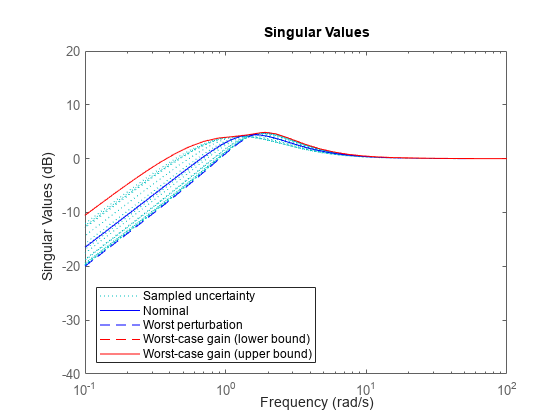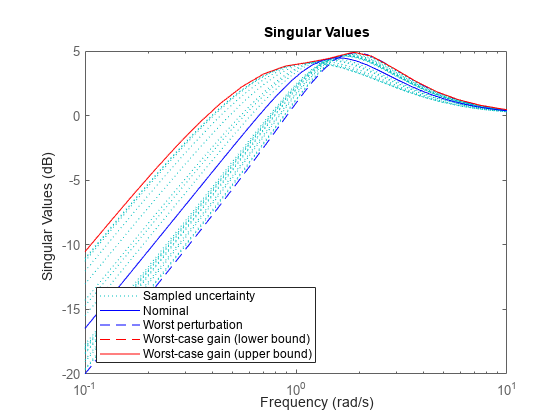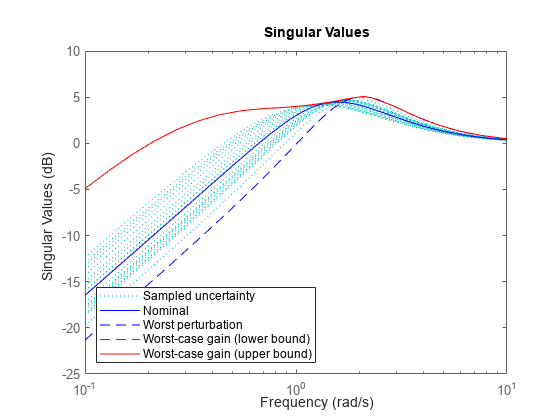wcsigmaplot
Plot worst-case gain of uncertain system
Description
wcsigmaplot( plots the nominal and
worst-case gains of the uncertain system usys)usys as a function of
frequency. For multi-input, multi-output (MIMO) systems, gain refers to the largest singular
value of the frequency response matrix. (See sigma for more information about singular values.) The plot includes:
Nominal — Nominal gain of
usys.Worst perturbation — The response falling within the uncertainty of
usysthat has the highest peak gain. This curve corresponds to thewcuoutput argument ofwcgain.Worst-case gain (lower bound) — The lowest possible worst-case gain at each frequency.
Worst-case gain (upper bound) — The highest possible gain within the uncertainty at each frequency. This curve represents the envelope produced by finding the highest possible gain at each frequency.
Sampled Uncertainty — Responses randomly sampled from
usys.
Examples
Input Arguments
Algorithms
wcsigmaplot uses wcgain to compute the worst-case gains. Use the opts
argument to set options for the wcgain algorithm.
wcsigmaplot uses usample to compute the Sampled Uncertainty curves.


